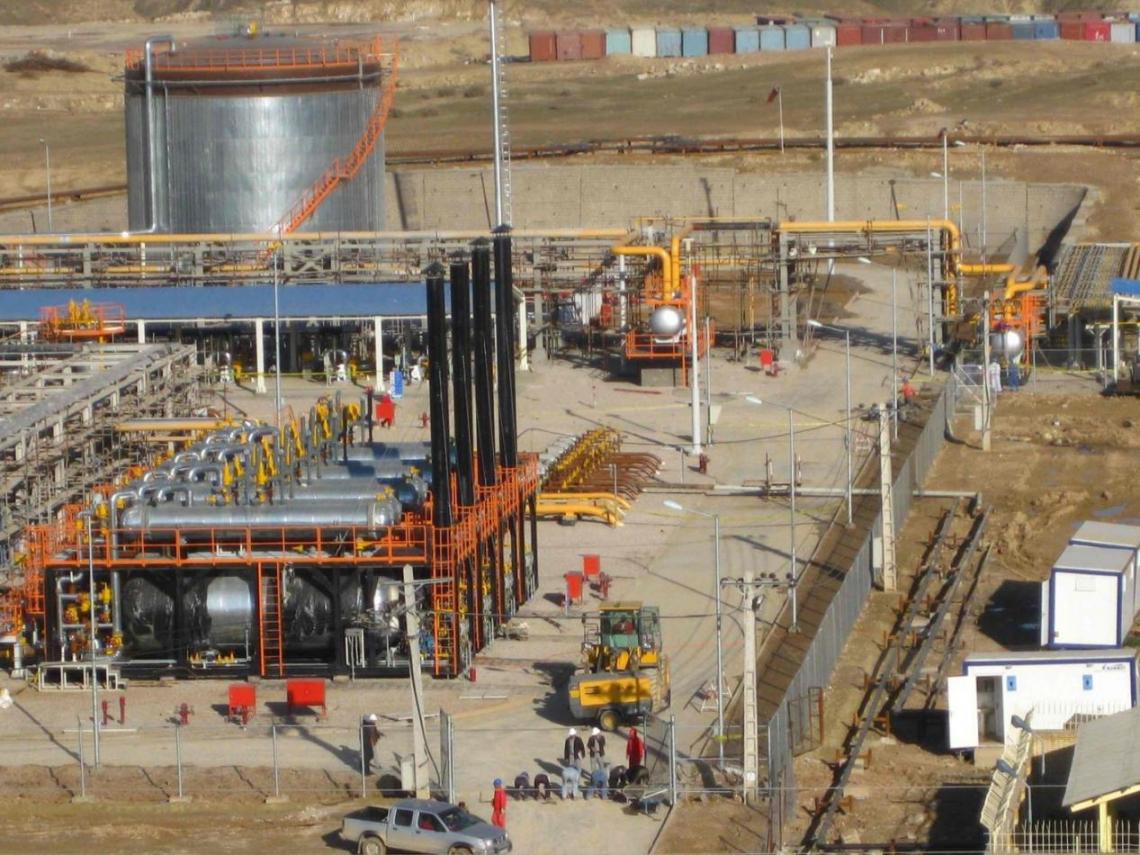Phase 1 of Khesht Oilfield development plan will go on stream by the end of the current Iranian year (March 19, 2016), managing director of South Zagros Oil and Gas Production Company said on Thursday.
"It is estimated that phase one's production capacity stands at 20,000 barrels per day," Gholamhossein Montazeri was quoted as saying by Mehr News Agency.
Montazeri noted that Khesht Oilfield's crude will be exported through Bandar Genaveh Terminal in Bushehr Province.
Referring to the development plan of second phase, he said, "The field’s oil output will surpass 30,000 bpd, once the drilling operation of Phase 2 comes to an end."
According to the official, Phase 1 has made 80% physical progress and plans have been made to expedite the key project utilizing local resources so that it becomes operational by the yearend.
The oilfield's development consists of flow lines of oil production, injection and pipeline facilities. It also includes wellhead facilities, separation, desalting, gas compression and associated infrastructure to process and export up to 30,000 bpd of crude oil for gas injection in wells and for transportation of processed products by pipeline.
In addition, it has four pipelines, totally stretching over 24 kilometers, as well as 98 km of export pipeline to Genaveh Port.
Development of the field, 45 km off the southwestern city of Kazeroun, started in 2006.
The field is estimated to contain more than a billion barrels of crude oil in place, of which 270,000 million barrels would be recoverable.
Exploration activities commenced on July 25, 2015, to find oil and gas reserves in a geologically complex anticlinal trap in the southern Fars Province.
"The exploration well is located 10 kilometers north of Khesht City and 35 km west of Kazeroun City," exploration manager at the National Iranian Oil Company, Hormoz Qalavand, was quoted as saying.
The project is aimed at oil and gas discovery in the unexplored parts of Asmari, Bangestan and Khami hydrocarbon layers.
Following the issuance of a drilling permit by the Cabinet, funding was allocated and a drilling rig, owned by the National Iranian Drilling Company, was dispatched to the site. The well was drilled up to approximately 5,300 meters, with drilling operations projected to conclude within a year.
There has been relatively little exploration and development work in the past decade, so Iran is optimistic about finding more oil using modern technology.
The Zagros fold-thrust belt, which extends for about 2,000 kilometers from southeastern Turkey through northern Syria and Iraq to western and southern Iran, has excellent structural traps for the accumulation of oil and gas, and accounts for Iran’s major oil and gas fields.
The giant fields of the Zagros belt fall within the greater context of the Arabian-Iraq-Persian basin and contain cumulative recoverable reserves estimated at 87 billion barrels of oil and 514 trillion cubic feet of gas.
Asmari Formation is the major oil reservoir in Iran, mainly composed of carbonate entities (limestone and dolomite).
The formation produces almost 85% of total Iranian crude oil and it is one of the major known reservoirs in the world.


